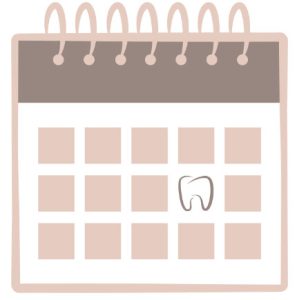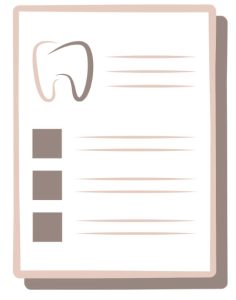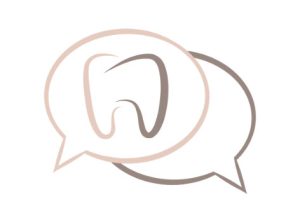Patient Information

Appointment
The first step towards a beautiful, healthy smile is to schedule an appointment. Please contact our office by phone or complete an online appointment request.

New Patient Forms
If you are a new patient to our office, the attached file contains our new patient bundle with forms that will need to be filled out when you arrive at our office. Printing them, filling them out and bringing them with you will allow us to attend to your medical needs more quickly than completing them on your arrival. Thank you and please call our office if you have any questions at all.

Frequently Asked Questions
Click Here to view some of the most frequently asked questions patients have about dentistry and oral health issues.
Sedation Dentistry
A significant number of Americans do not visit the dentist for regular checkups because they are too fearful or suffer from dental anxiety. Sedation dentistry offers an excellent way to provide a safe, anxiety-free, dental experience to those who are afraid of the dentist.
Sedation dentistry is often mistakenly thought to induce sleep. In fact, most sedatives allow the patient to stay awake during the procedure. Sleepiness is a side effect of some medications, but nitrous oxide only work to calm anxiety throughout the dental visit.
Sedation dentistry is popular because most sedatives can be taken by mouth, meaning no injections, no anxiety and no pain. Some sedatives work so effectively that even the smells and details of the procedure cannot be recalled afterwards. Safety and compliance are two important aspects of treatments, so sedation dentistry offers both the individual and the dentist the best alternative.
Whatever the form of sedative, it is essential to be accompanied by a caregiver. Sometimes, sedatives are provided the night before the dental visit, which means that driving to or from the appointment is not advisable.
Here are some advantages associated with sedation dentistry:
• Anxiety is alleviated.
• Few side effects.
• More can be accomplished during each visit.
• No needles.
• No pain.
• Perfectly safe.
• Procedures seem to take less time.
What kinds of sedatives are available?
The most popular types of dental sedatives are nitrous oxide. Different levels of sedation (mild, moderate and deep) can be utilized depending on individual needs. Before administering any sedative, the dentist must analyze the full medical history of the patient, as well as taking note of any current medications.
Here is an overview of some of the most common types of dental sedatives:
Nitrous Oxide
Nitrous oxide, or “laughing gas,” is used as a mild sedative. It is delivered through a nose hood, and is administered throughout the entire procedure. Nitrous oxide elevates the general mood and can evoke a general sense of well-being. Most importantly, it relieves anxiety and reduces pain during the procedure. In addition, some tingling and numbness may be felt. There are few side effects associated with nitrous oxide, and it has been safely used in dentistry for many years.
Dental Anxiety and Fear
The overwhelming fear of dental appointments can be a common cause of anxiety. Many people visualize a drill-wielding man in a white coat just waiting to cause pain and remove teeth. The reality, however, is very different. The comfort, relaxation and happiness of the patient are embedded deep at the heart of any good dental practice. The staff at the practice will do whatever they can to reduce anxiety, allay fears and provide painless, quick treatments.
Recent technological advancements have meant that in many cases, dentists are able to replace noisy drills with painless laser beams. There are also a wide variety of safe anesthetics available to eliminate pain and reduce anxiety during routine appointments.
Here is a list of some of the most common dental fears:
• Fear of embarrassment about the condition of teeth.
• Fear of gagging.
• Fear of injections.
• Fear of loss of control.
• Fear of not becoming numb when injected with Novocain.
• Fear of pain.
• Fear of the dentist as a person.
• Fear of the hand piece (or the drill).
How can one overcome dental anxiety?
Dental anxiety and fear can become completely overwhelming. It is estimated that as many as 35 million people do not visit the dental office at all because they are too afraid. Receiving regular dental check ups and cleanings is incredibly important. Having regular routine check ups is the easiest way to maintain excellent oral hygiene and reduce the need for more complex treatments.
Here are some tips to help reduce dental fear and anxiety:
Talk to the dentist – The dentist is not a mind reader. Though it can be hard to talk about irrational fears with a stranger, the dentist can take extra precautions during visits if fears and anxiety are communicated.
Bring a portable music player – Music acts as a relaxant and also drowns out any fear-producing noises. Listening to calming music throughout the appointment will help to reduce anxiety.
Agree on a signal – Many people are afraid that the dentist will not know they are in significant pain during the appointment, and will carry on the procedure regardless. The best way to solve this problem is to agree on a “stop” hand signal with the dentist. Both parties can easily understand signals like raising the hand or tapping on the chair.
Spray the throat – Throat sprays (for example, Vicks® Chloraseptic® Throat Spray) can actually control the gag reflex. Two or three sprays will usually keep the reflex under control for about an hour.
Take a mirror – Not being able to see what is happening can increase anxiety and make the imagination run wild. Watching the procedure can help keep reality at the forefront of the mind.
Sedation – If there is no other way to cope, sedation offers an excellent option for many people. There are several types of sedation, but the general premise behind them is the same: the patient regains their faculties after treatment is complete.
Ask about alternatives – Advances in technology mean that dental microsurgery is now an option. Lasers can be used to prepare teeth for fillings, whiten teeth and remove staining. Discuss all the options with the dentist and decide on one that is effective and produces minimal anxiety.


